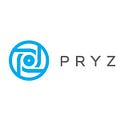DeFi Yield Farming: An Introductory Guide.
Introduction:
Since the launch of the first cryptocurrency blockchain, the possibility associated with it has been eternal. One such possibility is the introduction of yield farming — a reward scheme that enables you to get more from decentralised finance (DeFi) — that gained popularity in 2020. Some years back, a crypto enthusiast could only generate a reward by trading or holding it. Today, the story is different through the power of yield farming.
Yield farming gives you a new way to generate rewards from crypto. It might be challenging to benefit if you start, or you begin without adequate knowledge about it. Whichever one it is, you don’t have to panic or be scared. You can also benefit from yield farming, and that is why we have written all you need to know about DeFi yield farming below.
What Is Defi Yield Farming And How Does It Work?
Yield farming is a process where you get rewards from your cryptocurrency by investing it in a DeFi platform. It is simply a process of allowing your crypto to work for you while you earn passively. Sounds lovely right? Yield farming works like a bank loan, where you are paid interest on the money you lent. You can lend out your crypto or borrow crypto from a platform that supports it in yield farming.
Total Value Locked:
Total value locked (TVL) is the sum of all funds locked in the liquidity pool. This is very important to measure how healthy a yield farming platform is. An increase in the total value locked leads to an increase in the yield farming on a platform.
Risk of Yield Farming:
Just like everything that has to do with life, yield farming has its own risk. The higher the risk you take, the more profit you make. It is always advisable not to invest more than you can afford to lose.
Liquidity risk:
Liquidity risk occurs when the price of your loan is greater than the collateral you deposited. You run into loss if this happens. Liquidity risk is familiar with crypto that has high volatility.
Smart contract risk:
Defi protocols are open-sourced and can be open to bugs. These bugs can affect the token price, causing a high drop in the price of the token.
Composability risk:
Composability risk is also known as “money legos,” which means that all defi applications and platforms can interact without permission; this means that the whole defi platform relies on each of its building blocks. Naturally, composability should not be a risk but an advantage. It is a risk because if any of the building blocks stops working, the whole platform can be down.
